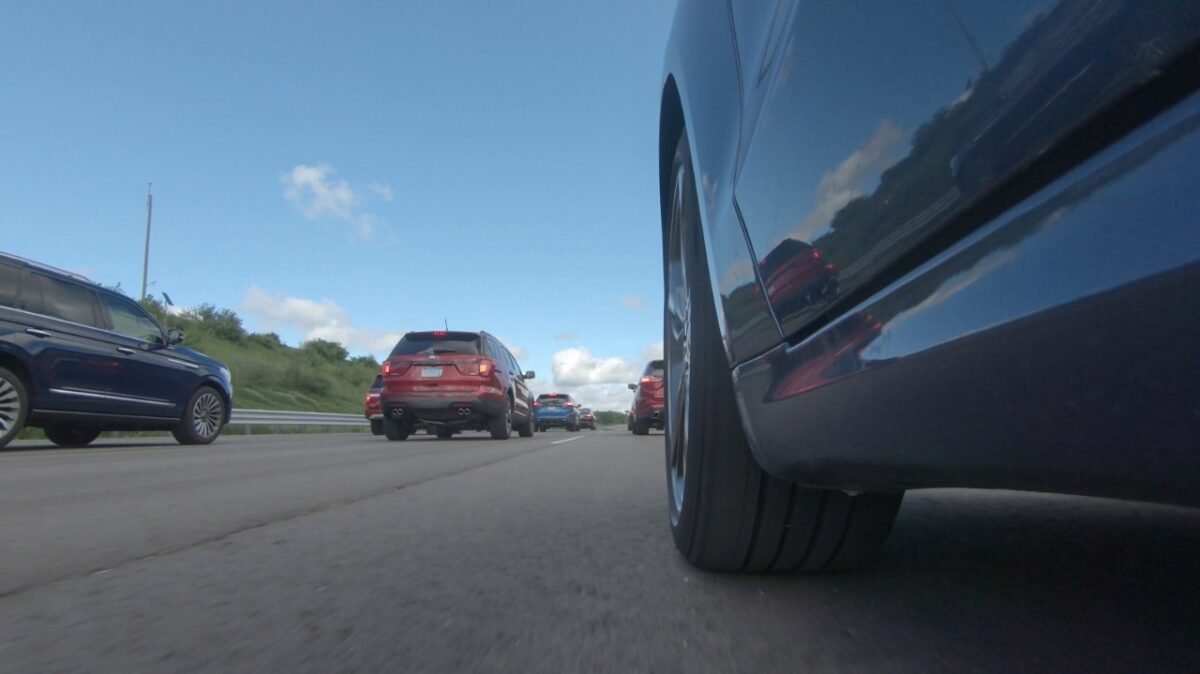Tailgating is more than just an annoyance for the person ahead of you — it’s also a dangerous way to drive. Following another vehicle too closely robs you of the time and space you need to react promptly and hit the brakes, and it puts you at a much higher risk for causing a serious rear-end collision. But there’s good news: If you’re not sure how to maintain a safe following distance, it’s easy to learn — and you can start right here.
Chevrolet’s Newest Truck: Learn more about the fully electric 2024 Silverado EV
The 3-second rule
If there’s one thing you need to know about following the vehicle in front of you from a safe distance, it’s that you should abide by the 3-second rule. According to this rule, you should maintain at least 3 seconds of distance between you and the vehicle ahead. This helps to ensure that you’ll have the minimum amount of time necessary to slow down or stop when the person ahead of you hits their brakes.
To follow the 3-second rule, note the moment that the vehicle you’re following passes a fixed object near the road (like a sign, a billboard, or a fence post). From this moment, count off 3 seconds (one one thousand, two one thousand, three one thousand). If you pass the fixed object before you’re done counting, briefly slow down just a bit to increase your following distance. Then, count off 3 seconds again with a new landmark to confirm your distance.
The 3-second rule is just a minimum, and the faster you’re driving, the more following distance you’ll need to establish. Nationwide notes a variety of other situations where you’ll need to increase your following distance. One thing to be aware of is road conditions. If traffic is heavy, many vehicle are entering and exiting a highway, or bad weather is affecting road conditions or visibility, you’ll want to establish more distance to stay safe. You should also be aware of the type of vehicle you’re following. For example, a bigger vehicle could obstruct your view if you follow too closely, and a bus or delivery van is more likely to brake for frequent stops.
Doing the stopping-distance math
A bit of simple math demonstrates the importance of maintaining a 3-second following distance. According to recent testing by Consumer Reports, the industry-average 60-0 mph stopping distance for all vehicles is 132 feet. 60 mph comes out to 88 feet per second, so that’s just over a second and a half to brake to a complete stop. However, you also need to add in your reaction time, which can often add another second and a half or more — meaning you need a total of at least 3 seconds to come to a halt.
Maintaining a safe following distance is a vital part of your defensive-driving toolbox. Staying aware of this will help you avoid crashes and reduce danger for yourself, your passengers, and other vehicles on the road.
A longtime editor/writer and recently transplanted Hoosier, Caleb Cook lives in Xenia, Ohio. His favorite activities are reading and listening to music, although he occasionally emerges from the heap of books and vinyl records in his basement to stand blinking in the sunlight. Once fully acclimated to the outside world again, he can be observed hanging out with his wife, attempting a new recipe in the kitchen, attending movies, walking the dog, or wandering into a local brewery to inquire about what’s on tap. See more articles by Caleb.











